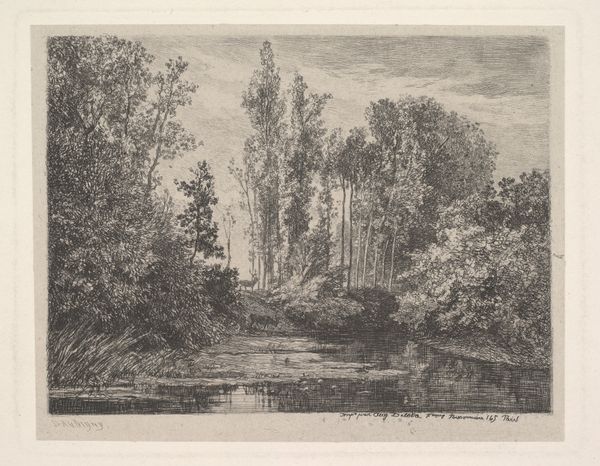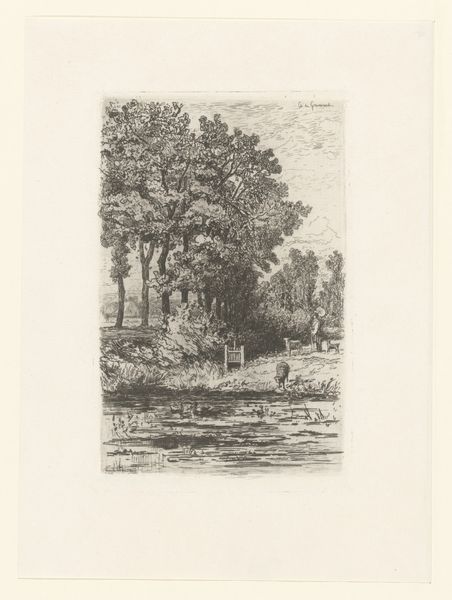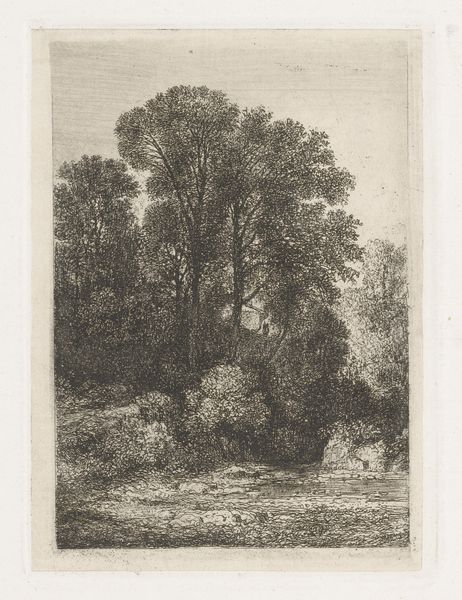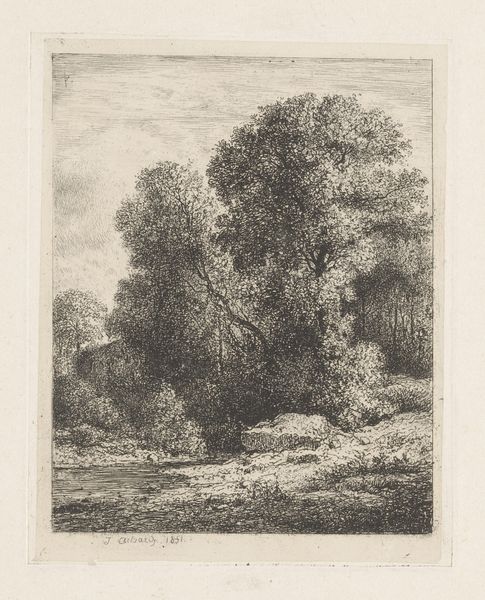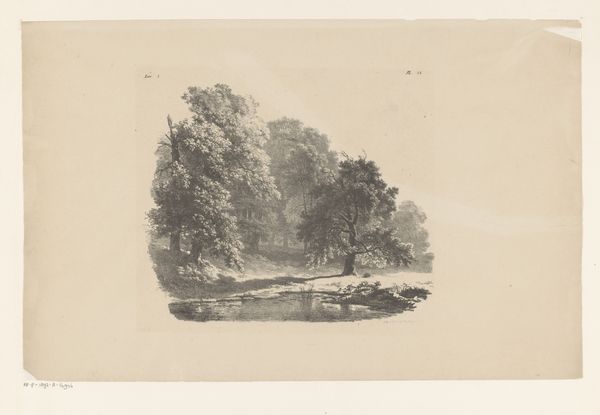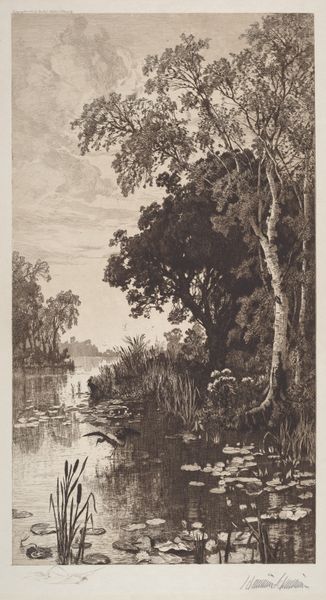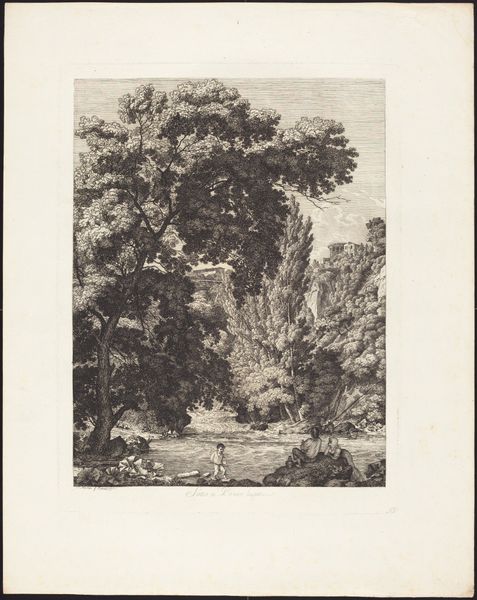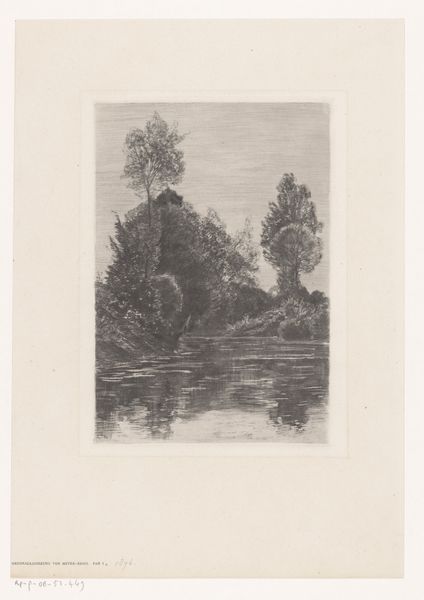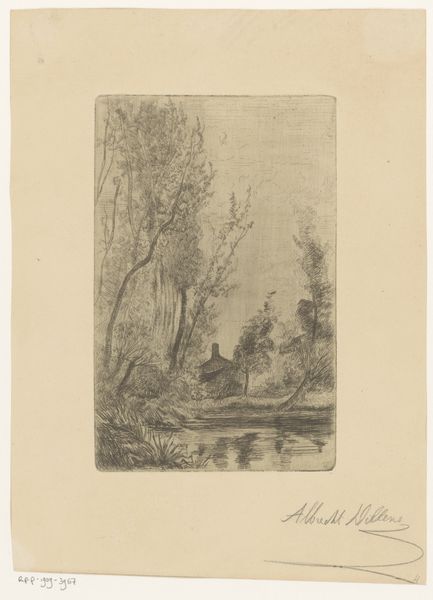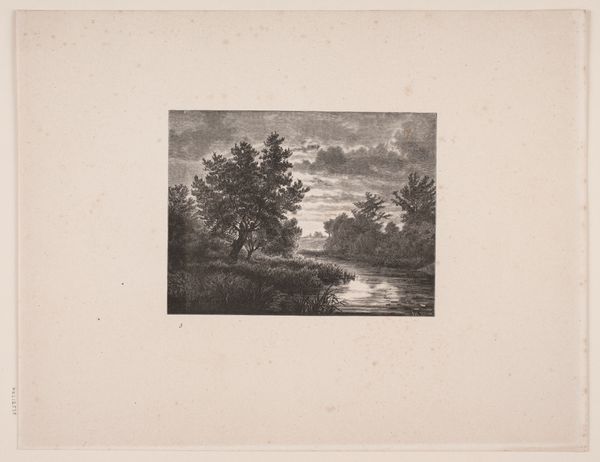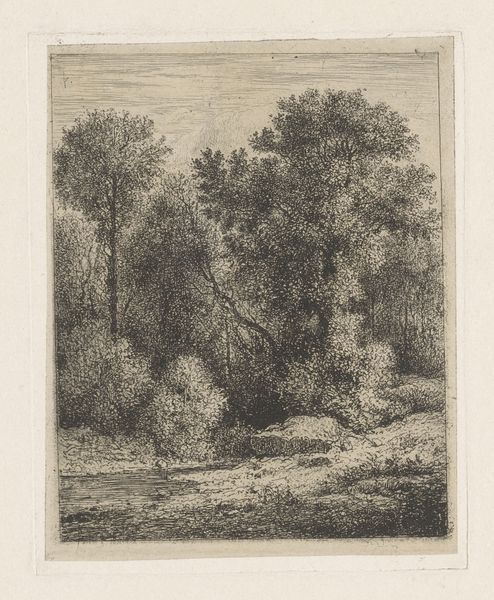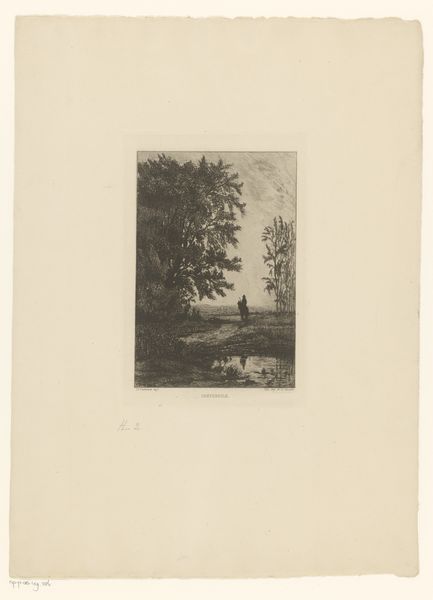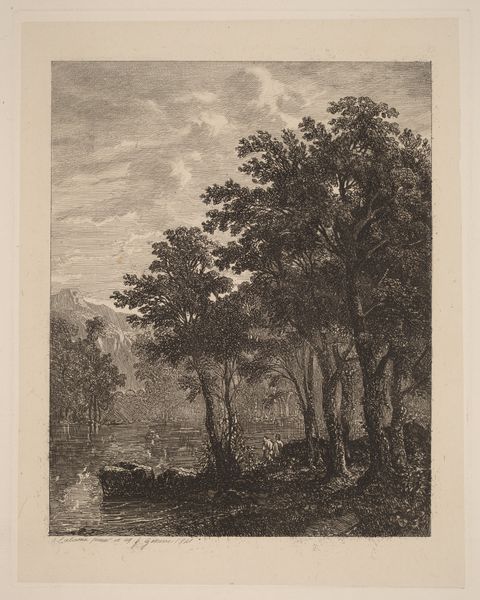
The Virgin Islands at Bezon (The Fish Pond) 1850
0:00
0:00
drawing, print, etching
#
drawing
# print
#
etching
#
landscape
#
romanticism
Dimensions: Plate: 6 5/8 × 5 1/4 in. (16.8 × 13.3 cm) Plate: 7 3/8 × 6 1/8 in. (18.7 × 15.6 cm) Sheet: 17 1/4 × 12 1/2 in. (43.8 × 31.8 cm)
Copyright: Public Domain
Editor: We’re looking at Charles-François Daubigny’s “The Virgin Islands at Bezon (The Fish Pond),” made around 1850. It's an etching, giving it this wonderful, almost velvety texture. The scene feels still, tranquil, but I wonder... what's contributing to that stillness, beyond the obvious subject matter? Curator: Well, let’s consider the production of this image. Etchings allowed for wider dissemination than, say, a unique painting. Were these tranquil scenes created for a burgeoning middle class seeking an escape from industrialized city life? How does the availability of prints influence our reading of “nature”? Editor: That’s a great point! The availability definitely shifts the perception. So, this etching becomes not just art, but also a commodity reflecting certain social desires. Curator: Precisely. And note Daubigny's technique. The cross-hatching creates a sense of depth, but it also points to the labor involved. The density of lines creates darker tones that create a seemingly idyllic location with visual labor. Does the ‘naturalness’ then feel less... natural? Editor: It does! Knowing the layers of work changes everything. The romance fades a little as the production becomes clear. Are we meant to see this landscape as something untouched, or something made? Curator: Exactly! It raises important questions about how art reflects the materials used and the social conditions it was created within, while still feeding consumer desire. Editor: This makes me rethink how I view landscapes, considering both the beauty and the process behind its creation. Curator: And hopefully, encourages us to analyze the economic structures that influence the ‘nature’ of art itself.
Comments
No comments
Be the first to comment and join the conversation on the ultimate creative platform.
